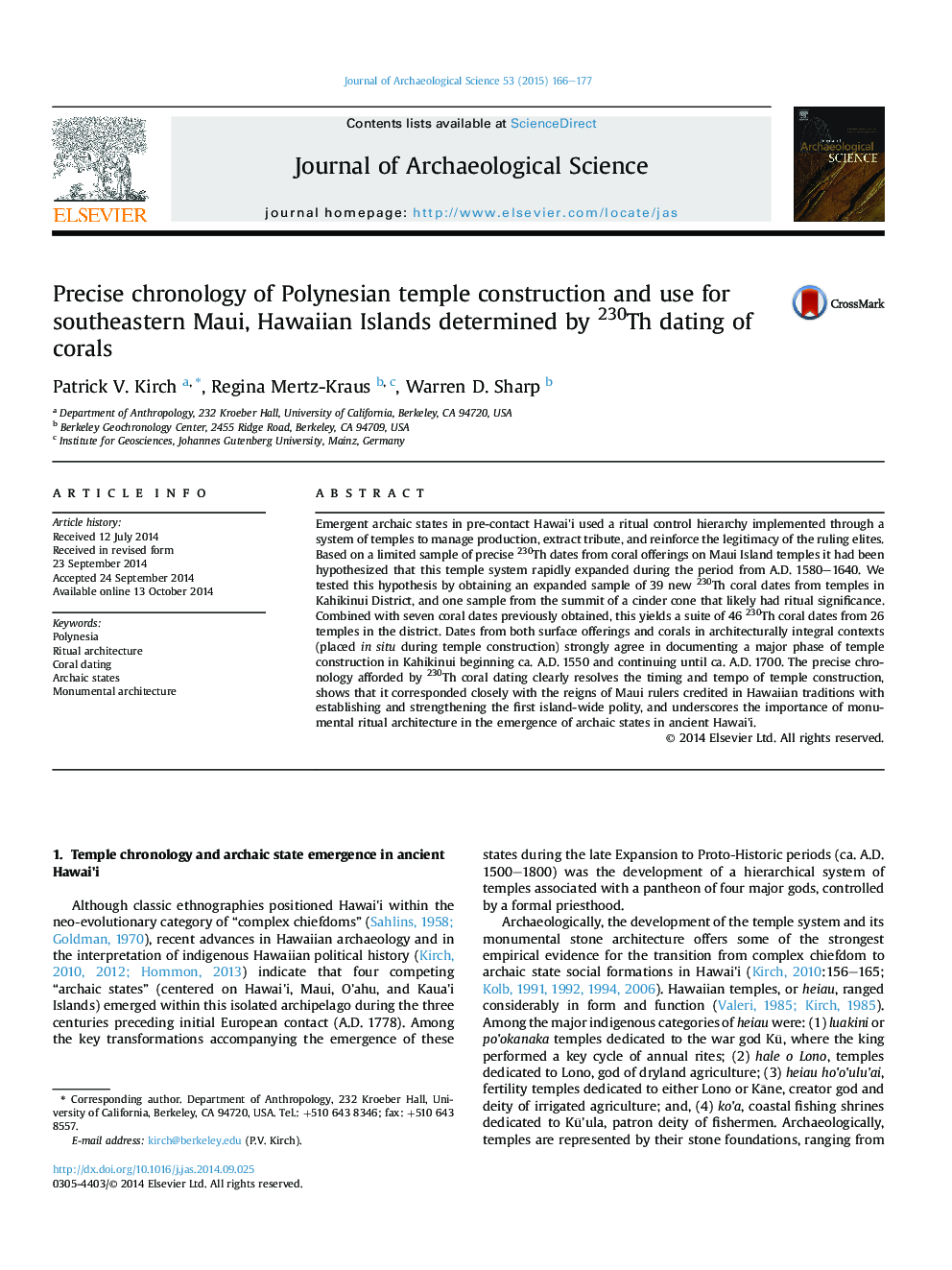| Article ID | Journal | Published Year | Pages | File Type |
|---|---|---|---|---|
| 7442520 | Journal of Archaeological Science | 2015 | 12 Pages |
Abstract
Emergent archaic states in pre-contact Hawai'i used a ritual control hierarchy implemented through a system of temples to manage production, extract tribute, and reinforce the legitimacy of the ruling elites. Based on a limited sample of precise 230Th dates from coral offerings on Maui Island temples it had been hypothesized that this temple system rapidly expanded during the period from A.D. 1580-1640. We tested this hypothesis by obtaining an expanded sample of 39 new 230Th coral dates from temples in Kahikinui District, and one sample from the summit of a cinder cone that likely had ritual significance. Combined with seven coral dates previously obtained, this yields a suite of 46 230Th coral dates from 26 temples in the district. Dates from both surface offerings and corals in architecturally integral contexts (placed in situ during temple construction) strongly agree in documenting a major phase of temple construction in Kahikinui beginning ca. A.D. 1550 and continuing until ca. A.D. 1700. The precise chronology afforded by 230Th coral dating clearly resolves the timing and tempo of temple construction, shows that it corresponded closely with the reigns of Maui rulers credited in Hawaiian traditions with establishing and strengthening the first island-wide polity, and underscores the importance of monumental ritual architecture in the emergence of archaic states in ancient Hawai'i.
Keywords
Related Topics
Physical Sciences and Engineering
Materials Science
Materials Science (General)
Authors
Patrick V. Kirch, Regina Mertz-Kraus, Warren D. Sharp,
